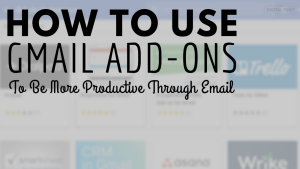In Part 1 of 7 Ways to Sell Fellow Stakeholders on an Explainer Video, we explored what to do when you believe that your business could benefit from an explainer video but–before moving forward–you need to persuade your fellow stakeholders that this is the way to go. To help convince your colleagues, we touched on the following points:
- The Persuasive Power of Numbers
- Fear of Missing Out
- Demystifying the “Process”
Today, in Part 2, we’ll discuss four more ways to sell fellow stakeholders on an explainer video:

4. The Perfect Example: A picture may be worth a thousand words, but the perfect video can be a shortcut to that single, golden word: YES. As persuasive as numbers and rhetoric may be, there’s an unquantifiable benefit to sharing an explainer video that demonstrates proof-of-concept to your fellow stakeholders.
But, as you’ve probably noticed, there are lots of explainers out there. So, when looking for that perfect example to share, what qualities should you look for in an explainer video? There’s no magic formula to arrive at this answer, but below are a few of the qualities we think are most significant in demonstrating both why an explainer works and how it can be shaped to work very well for your company:
- Animation Style (i.e. whiteboard technique, 2D character animation, CGI, etc.)
- Memorable Illustrations
- Tone (find a video that perfectly captures both messaging and corporate culture)
- Strong Opening and Closing
Finding that perfect proof-of-concept explainer video can be helpful, but so too is what you do with it next…
5. One Size (Appeal) Does Not Fit All: Unlike the typical pitch meeting, “pitching” fellow stakeholders on the importance of an explainer video is different because–at least not at first–there often isn’t that single, pivotal physical meeting. On the one hand, this is part of the reason why it might take so long for everyone to sign off, but on the other hand this is something you can use to your advantage. That’s because, without having that single pitch meeting, you don’t have to limit yourself to a single pitch. Instead, you have the ability to cater your pitch differently to different stakeholders.
As you well know, what appeals to marketers is different than what appeals to sales people (which is different than what resonates with the management team, etc. etc.).
These are just a few examples, but the overarching point is to find the right content and plea to try and persuade each stakeholder. And even if initially you only manage to convince one other person, that’s still an important thing. Because…
6. Two Heads are Better Than One: No matter how many stakeholders you’re trying to persuade, once you’ve converted just one another person to your side you’re in an infinitely better position. Not only does this demonstrate progress but it also provides you with an ally in accomplishing your objective. And, by extension, it can change the way that other stakeholders perceive that objective.
When you are the only person voicing a desire for anything (be it an explainer video or something else entirely) there is often a tendency for group members to ascribe that objective to you–maybe they even call it “your project”–which can be frustrating because, ultimately, it’s not about you. It’s about the group as a whole, and what’s best for the whole company. That’s why it is so valuable to have at least one other voice of support on your side.
So although, at times, it might feel like an uphill battle, just keep in mind that persuading just one fellow stakeholder will provide enormous benefit.
7. Persistence: It really does pay off! And, albeit frustratingly, it’s often a necessity.
This is especially true in a B2B environment. Recently we interviewed Dan Englander about his new book The B2B Sales Blueprint: A Hands-On Guide to Generating More Leads, Closing More Deals and Working Less and he touched on this topic when stating , that “in B2B situations, the buying dynamic is very different. There are a lot more stakeholders involved. That makes for a longer-term sales process, usually…Just being in touch and staying in touch with somebody through the long haul pays off.”
Englander’s comments, from the point of view of the sales person, are just as true for those internal stake holders. This process often takes a long time. But just as often, it’s worth it.
So stay persistent, stay committed and try to stay away from saying “I told you so” to your fellow stakeholders when it all works out…
Business & Finance Articles on Business 2 Community(48)
Report Post





